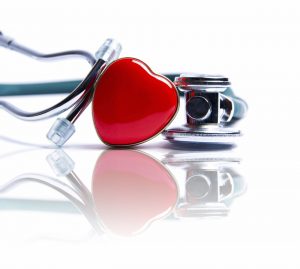Act FAST: Signs of a Stroke

Did you know that strokes are the fifth leading cause of death in the United States?
A stroke occurs when blocked or ruptured vessels cut blood and oxygen flow to an area of the brain, damaging the surrounding cells and impairing functionality. Despite what you may think, this “brain attack” is not reserved for older adults. Strokes can affect anyone at any time – nearly 800,000 people are affected each year. More importantly, 80% of those episodes can be prevented. Protect yourself and others by knowing the key symptoms, warning signs and prevention tips.
Symptoms:
Stroke symptoms often occur very suddenly and may vary depending on what part of the brain was affected. Every minute counts when treating a stroke, so knowing what to look for may help save a life. To recognize the most common stroke symptoms in yourself or others, remember to act FAST:
Face drooping – does one side of the face droop or is it numb? When asked to smile, is person’s smile uneven or lopsided?
Arm weakness – is one arm weak or numb? Ask the person to raise both arms. Does one arm drift downward?
Speech difficulty – is speech slurred? Is the person unable to speak or hard to understand? Ask the person to repeat a simple sentence, like “The car is fast.” Are they able to repeat the words?
Time to call 911 – if someone is showing any of these signs, even if the symptoms go away, call 911 or an emergency responder immediately.
Warning Signs
 The FAST test is great for identifying hallmark stroke symptoms, but that’s not to say other warnings should be discounted. If you or anyone experiences a sudden onset of the following sensations, seek out medical attention immediately:
The FAST test is great for identifying hallmark stroke symptoms, but that’s not to say other warnings should be discounted. If you or anyone experiences a sudden onset of the following sensations, seek out medical attention immediately:
- Blurred vision
- Loss of balance
- Dizziness
- Severe headache
- Numbness, tingling, or complete loss of sensation in any part of the body
- Memory loss
- Difficulty swallowing
- Involuntary eye movement
- Muscle stiffness
- Confusion
3 Easy Prevention Tips
While the onset of some strokes are simply not controllable, a vast majority of episodes can be prevented. Research has proven that certain lifestyle habits, such as having a poor diet or tobacco and alcohol use, and medical conditions, like high blood pressure or diabetes, drastically increase the likelihood of having a stroke. So what can you do to avoid being at risk? It’s as simple as 1-2-3.
- Eat Healthier
- Swap out those saturated and trans fats, sugars and sodium for vegetables, fruits, grains, and proteins. Avoid overeating by staying within the recommended calorie limit. Improving your diet will reduce not only your stroke risk but many other chronic illnesses too.
- Exercise Daily
- Whether it’s taking a walk by yourself or biking with a friend, daily physical activity is imperative for stroke prevention. Need help finding a starting point? The Center for Disease Control and Prevention provides health outlines, tips, and videos for all ages to get you moving.
- Maintain a Healthy Blood Pressure
High blood pressure is the number-one cause of stroke. Having a blood pressure above 120/80 increases your risk 1.5 times, as compared to those at or below that benchmark. If diet modification and physical activity fail to keep your BP under control, consult a doctor for further evaluation.

A stroke is a scary experience that can impact a life in minutes. Luckily, the chances of it impacting you can be significantly lowered through prevention and immediate action. By knowing how to act FAST, recognizing warning signs and eliminating key risk factors, you’ll be one step ahead in stroke preparedness.
Information provided by the National Stroke Association. For more information on stroke prevention, treatment and resources, please visit www.stroke.org.
Leave a Comment
